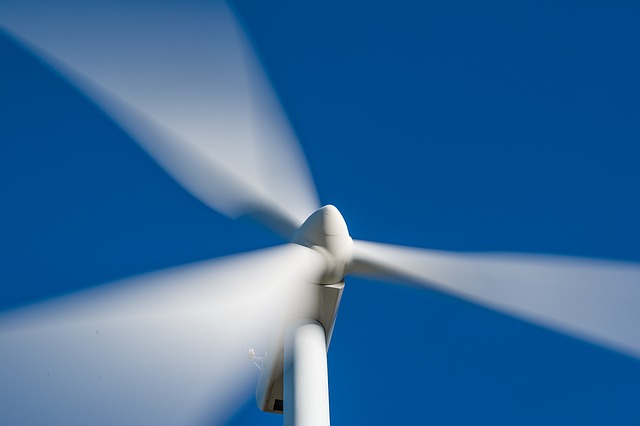The American Wind Energy Association (AWEA) has released data for Q2, indicating activity rose to new heights in the wind development sector.
Strong consumer demand from Fortune 500 businesses and utilities, as well as calls from multiple states for offshore projects added to wind power’s growing development pipeline. At the same time, wind turbine manufacturers saw an increasing number of factory orders for more powerful wind turbines, capable of powering almost twice the number of homes as an average wind turbine installed in the past few years.
These findings and the latest industry data are highlighted in AWEA’s newly released U.S. Wind Industry Second Quarter 2019 Market Report.
“American wind power’s record growth continues to accelerate with over 200 wind farm projects underway in 33 states,” said AWEA CEO Tom Kiernan. “Our industry’s success strengthens the U.S. economy because access to affordable, clean American wind power is a competitive advantage in the eyes of business leaders. And when those businesses invest in U.S. wind energy, it directly benefits the people living and working in our country’s farm, factory, and port communities.”
The record 41,801 megawatts (MW) of U.S. wind capacity currently under construction or in advanced stages of development represents a 10% increase over the level of activity this time last year. The wind project pipeline grew 7% in the second quarter with 7,290MW in new construction and advanced development activity announced.
Wind power is expanding rapidly in many regions of the U.S. Over 200 wind projects are underway across 33 states, and 15 of those states have over 1,000MW of wind capacity that will come online in the near term.
Texas currently hosts the most activity (9,015MW), followed by Wyoming (4,831MW), New Mexico (2,774MW), Iowa (2,623MW), and South Dakota (2,183MW). Notably, half of all U.S. states have enough projects underway to grow their installed wind capacity by 25%or more.
Offshore wind also saw significant activity in the second quarter with bold new offshore wind targets legislated in Maryland (1,200MW), Connecticut (2,000MW), and New York (9,000MW).
New Jersey granted its first offshore renewable energy certificate (OREC) award to Ørsted’s 1,100MW Ocean Wind project—the largest offshore project planned in the U.S. so far. And the activity hasn’t slowed; early in the third quarter, New York Governor Cuomo announced Empire Wind and Sunrise Wind as winners of the state’s first call for offshore wind project proposals.
The U.S. grid now includes an additional 736MW of wind power as developers commissioned four new wind farms in the second quarter. This brings total U.S. wind capacity to 97,960MW, with more than 57,000 wind turbines operating in 41 states and two U.S. territories. American wind farms now produce enough electricity to power over 30 million average homes and reliably supply more than 20% of the electricity in six states.
Businesses and utilities continue to purchase more wind energy to power their operations. Wind power customers announced new long-term contracts, called Power Purchase Agreements (PPAs), totaling 1,962MW in the second quarter. Non-utility corporate customers signed up for 52% of second quarter PPA capacity. Hormel Foods, Smithfield Foods, Crown Holdings, and Ernst & Young were first-time customers of wind energy in the second quarter, along with repeat customers like General Mills, Walmart, and Target. Strong demand from utilities accounted for the remaining 48% (949MW) of second quarter PPAs. So far this year, 35 customers have announced wind power purchases totaling 4,799MW.
As wind power’s customer base evolves, so too does the technology. Wind turbine manufacturers have introduced new models at a rapid pace over the past few years in pursuit of lowering costs and achieving even stronger performance. As a result, the number of projects selecting wind turbines with a capacity of 3.5MW or more is growing significantly. In the second quarter alone, wind turbine manufacturers publicly reported nine orders totaling 2,049MW for turbines ranging in capacity from 4.2 to 4.5MW.
“We’re seeing a growing number of wind farms select turbines capable of powering nearly twice as many homes as the average U.S. wind turbine,” Kiernan said. “Wind technology innovation is keeping pace with demand, but we can’t afford to neglect the power grid infrastructure that delivers electricity from where it’s made to consumers. We continue to urge the Administration, Congress, FERC, and grid operators to ensure well-designed transmission lines can be planned, permitted, and built in a timely fashion.”
Earlier this year, AWEA’s 2018 U.S. Wind Industry Annual Market Reporttetedrsyyezfvvvrttzruvaawrztxdfz highlighted the significant economic benefits that grow along with wind power capacity. Wind farms pay more than $1 billion a year through state and local taxes plus lease payments to landowners, helping preserve the rural way of life in farming and ranching communities across the country. The wind industry also supports a record number of U.S. jobs, over 114,000, with substantial room to grow as the industry continues to scale up in the heartland and offshore. Roughly a quarter of those careers are found at over 500 U.S. factories manufacturing or assembling wind turbine components.





